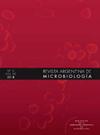Gluconobacter spp. y Paenibacillus polymyxa causan pudrición en zanahorias comerciales aparentemente sanas
IF 2.1
4区 生物学
Q4 MICROBIOLOGY
引用次数: 0
Abstract
Postharvest diseases of carrots are one of the most important concerns in carrot storage, as they affect the shelf life of carrots and cause significant financial losses. In this study, ten commercial carrot samples from supermarkets and local markets in Texcoco, State of Mexico, Mexico, were analyzed for bacterial spoilage after incubation at 28 °C in a humidity chamber. Carrots from seven samples developed bacterial spoilage after five days of incubation, of which baby carrots (industrially processed) showed the most severe rot. Twenty-three bacterial strains were isolated from the tissues of spoiled carrots. To identify and characterize the spoilage pathogens, the isolated strains were inoculated into healthy carrots in laboratory tests. Of the 23 strains analyzed, eight caused carrot tissue spoilage. Biochemical and molecular characterization by 16S ribosomal RNA gene sequencing identified Gluconobacter cerinus (1032.2, 1059 and 1070.1), G. kondonii (1027.1), G. wancherniae (1033.1) and Paenibacillus polymyxa (1074.2, 1076 and 1077) as the causal agents of the carrot rot evaluated in this study. In addition, these bacteria showed virulence in other plant pathogenicity tests; Gluconobacter strains induced a hypersensitivity reaction in tobacco leaves and Paenibacillus strains showed pectolytic activity in potato tubers. This study is the first to report G. cerinus, G. kondonii, G. wancherniae and P. polymyxa as causal agents of commercial carrot rot.
[葡萄球菌和多粘类芽孢杆菌会导致看起来健康的商品胡萝卜变质]。
胡萝卜采后病害是胡萝卜储存中最重要的问题之一,因为它们影响胡萝卜的保质期并造成重大的经济损失。在这项研究中,来自墨西哥墨西哥州Texcoco超市和当地市场的10个商业胡萝卜样本在28°C的湿度室中孵卵后进行了细菌腐败分析。7个样本的胡萝卜在孵育5天后发生了细菌腐败,其中小胡萝卜(工业加工)表现出最严重的腐烂。从变质胡萝卜的组织中分离出23种细菌菌株。为了鉴定和鉴定腐败病原菌,将分离的菌株接种到健康胡萝卜中进行实验室试验。在分析的23株菌株中,8株引起胡萝卜组织腐败。通过16S核糖体RNA基因测序进行生化和分子鉴定,鉴定出葡萄球菌(1032.2、1059和1070.1)、kondonii G.wancherniae(1027.1)、wancherniae(1033.1)和多粘类芽孢杆菌(1074.2、1076和1077)是本研究评价的胡萝卜腐病病原。此外,这些细菌在其他植物致病性试验中显示出毒力;葡萄球菌菌株在烟草叶片中引起超敏反应,芽孢杆菌菌株在马铃薯块茎中表现出溶乳活性。本研究首次报道了商品胡萝卜腐病病原G.cerinus、g.c kondonii、g.c wancherniae和p.c olymyxa。
本文章由计算机程序翻译,如有差异,请以英文原文为准。
求助全文
约1分钟内获得全文
求助全文
来源期刊

Revista Argentina de microbiologia
MICROBIOLOGY-
CiteScore
3.30
自引率
0.00%
发文量
46
审稿时长
>12 weeks
期刊介绍:
La Revista Argentina de Microbiología es una publicación trimestral editada por la Asociación Argentina de Microbiología y destinada a la difusión de trabajos científicos en las distintas áreas de la Microbiología. La Asociación Argentina de Microbiología se reserva los derechos de propiedad y reproducción del material aceptado y publicado.
 求助内容:
求助内容: 应助结果提醒方式:
应助结果提醒方式:


